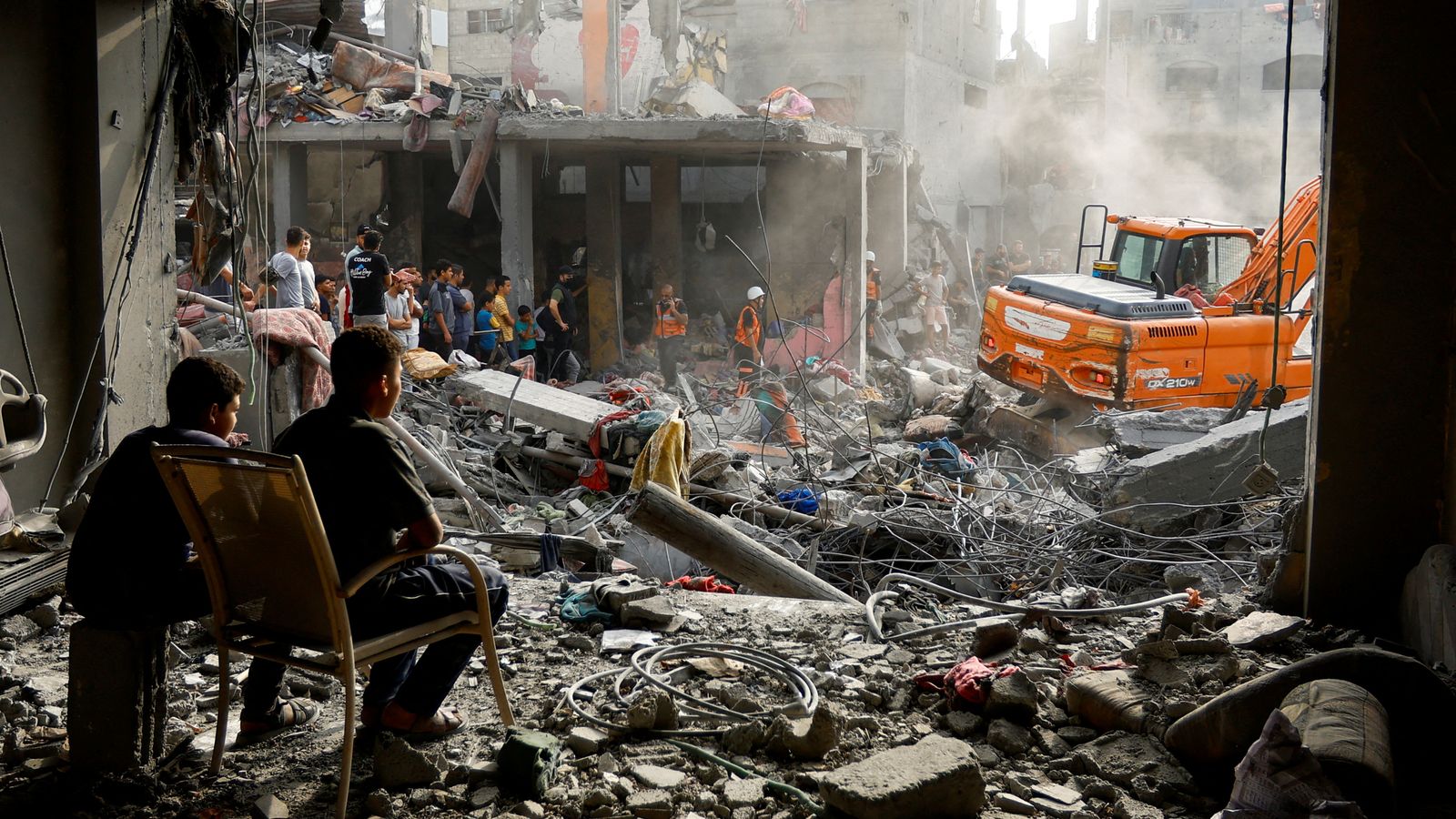The story we’re currently seeing unfolding in Israel and Gaza at present doesn’t seem to have much to do with economics. It’s about murders, terrorism and missile attacks.
But the economics lurks behind the scenes. It can’t explain all of what’s happening in the Middle East. It certainly can’t justify the horrendous attacks on Israel on 7 October – the worst massacre of Jewish people since the Holocaust.
Nor can it explain the intensity of the Israeli response, which has, according to Palestinian representatives, claimed more lives than were lost in the Hamas attack.
But, alongside religion, history, democracy – and the lack of it – economics is nonetheless an important part of the background story to the instability in this region.
Trustworthy data on the Palestinian Territories is hard to come by, but earlier today UNCTAD, the economic wing of the United Nations, published its annual stock-take of the Palestinian economy – perhaps the most reliable assessment of the situation on the ground. And that situation is stark.
It shows that as of last year, in other words before the recent attacks, the economy of Gaza was, by some measures, the most benighted in the world.
Gross domestic product per capita – the broadest measure of living standards – was a whopping 46% below its 1994 levels.
Negotiations to free more Gaza hostages could be jeopardised by Israeli ground attack, Qatari mediators warn
Israel-Gaza ground offensive: Hamas warned delay to attack has made Israeli troops ‘more lethal’
US spy agencies believe hospital blast caused by Palestinian rocket that broke apart after engine failure, officials say
In other words, in the space of a generation, even as most other countries around the world saw their living standards rise sharply, Gaza’s people have become dramatically poorer.
What’s particularly striking when you look through the data is the divergence between Gaza and the West Bank, the other main part of the Palestinian Territories.
The two regions’ economies had roughly similar GDP per capita up until around 2007, when Hamas seized control of the Gaza Strip.
But look at what happened next. Economic growth in the West Bank meant that its economy is now considerably bigger and more prosperous than its 2007 levels.
The Gaza Strip, meanwhile, has seen its levels of prosperity crumple in a fashion rarely seen elsewhere in the world.
It’s a similar story if you look at unemployment rates in each of the regions: while they were relatively close up until 2007 (albeit that the Gaza jobless level was always a few percentage points above the West Bank level) in the post-Hamas period, the two lines have diverged dramatically.
The jobs market in the West Bank is (or was, as of 2022) tough. The jobs market in Gaza was hopeless.
Compare the Gaza Strip to other countries and you see just how much of an outlier it is.
While the unemployment rate in Israel is 3.5%, the comparable rate in the Palestinian Territories is 24% and the rate in the Gaza Strip is at 45%.
This is higher than any other country in the world – and note that the number is significantly higher for women and for young people.
There are plenty of explanations for this divergence. After Hamas took control of Gaza, Israel imposed a series of restrictions on the flow of people and trade in and out of the region.
The border is heavily policed. Entry and exit by air and sea is banned and there are only two crossing points towards the West Bank and East Jerusalem.
The majority of residents have been “locked in” for years, making it more like a prison than a fully functioning state.
Look at this chart of exports from Gaza and the West Bank and you get a sense of what this means in practice.
While the West Bank (and for that matter most other economies) have been able to grow their exports each year, as new businesses seek out opportunities to trade with Israel (the trade mostly goes to Israel), Gaza’s exports have essentially flatlined.
Of course, this does not cover the black market, but it’s the best picture we have available.
Israeli authorities say these restrictions are an essential part of policing Hamas and preventing terrorist activity. Trade is monitored and controlled to prevent weapons coming in and leaving.
That goes, too, even for items like fertiliser and steel tubes, since they could be used to make missiles. And they have more than half a point: Hamas social media accounts have gleefully boasted about how productive its home-made ammunition factories have been – despite these restrictions.
Please use Chrome browser for a more accessible video player
These restrictions are not the only explanation for the collapse in Gaza’s economy: corruption is rife throughout the territory, with the upshot that much of what enters the country for the purpose of helping civilians is sometimes seized by Hamas leaders.
It is a sorry story, and the upshot is that Gaza has been a failing economy for many years, with levels of deprivation and poverty which have mounted to world-leading levels.
None of the above can explain, let alone justify, the attacks of October 7. In a parallel universe, Gaza could have been blessed with leadership which would turn the lines in the chart around – though that would also have been reliant on Israel lifting its various restrictions.
But numbers like these tend to make people feel desperate.
Gaza was already desperately poor before Hamas won its election and seized power. It has become significantly poorer, and significantly more desperate, in the years since.










